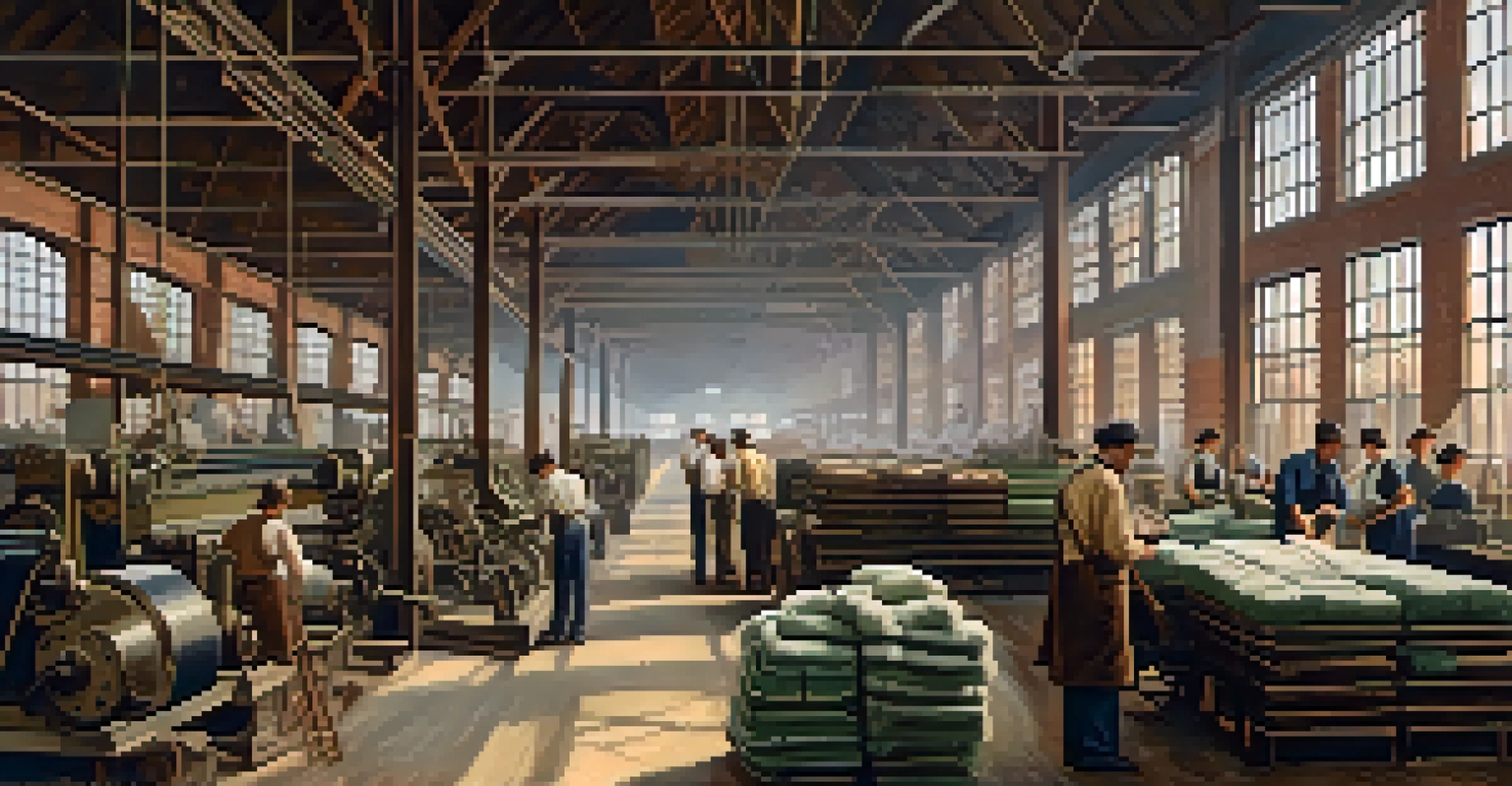The Rise of Atlanta: Growth and Industrialization in the 1900s

The Foundation: Atlanta's Early Beginnings
Atlanta's story begins in the 1830s as a railroad terminus called Terminus. This strategic location attracted settlers and businesses, laying the groundwork for future growth. The convergence of multiple railroads made Atlanta a vital transportation hub, setting the stage for its rapid industrialization.
The strongest factor for success is self-esteem: Believing you can do it, believing you deserve it, believing you will get it.
By the time the Civil War erupted, Atlanta had established itself as a key supply center for the Confederacy. This strategic importance only heightened its growth potential, despite suffering significant destruction during the war. After the war, Atlanta quickly rebuilt, driven by a resilient spirit and a commitment to progress.
The post-war era saw an influx of people seeking opportunities in the burgeoning city. With the promise of jobs and a fresh start, Atlanta attracted many, including freed slaves looking for a new life. This demographic shift played a crucial role in shaping the city's future, making it a melting pot of cultures and ideas.
Railroads and Transportation: Fueling Growth
The expansion of the railroad network in the late 19th century was pivotal for Atlanta’s industrial growth. Railroads not only facilitated the movement of goods but also connected Atlanta to major markets across the Southeast. This accessibility made it attractive for manufacturers and suppliers alike.

By the early 1900s, Atlanta had become a significant industrial hub, with factories popping up across the region. Industries such as textiles, lumber, and food processing thrived, creating a diverse economy. This boom brought jobs, transforming the city into a bustling center of commerce.
Atlanta's Growth from Railroads
The expansion of railroads in the late 19th century was crucial for Atlanta’s industrial development, connecting it to major markets and attracting manufacturers.
Moreover, the development of streetcars and improved roadways further enhanced the city’s transportation infrastructure. This ease of movement encouraged suburban growth and made it possible for more people to commute to work. Atlanta was not just growing; it was evolving into a modern city.
The Rise of Manufacturing: Key Industries in Atlanta
The manufacturing sector emerged as a backbone of Atlanta's economy in the early 20th century. Key players included textile mills, which flourished due to the region's access to cotton supplies. This industry not only provided thousands of jobs but also positioned Atlanta as a leader in textile production.
In the middle of every difficulty lies opportunity.
In addition to textiles, the lumber industry played a significant role in Atlanta's growth. With vast pine forests surrounding the area, lumber mills sprang up to meet the demand for building materials. This not only supported local construction but also contributed to the city's rapid expansion.
Moreover, food processing industries began to take root, utilizing the agricultural bounty of Georgia. As Atlanta became known as a market for agricultural products, it solidified its reputation as a vital economic center. These industries collectively helped transform Atlanta into a thriving metropolis.
Population Boom: Atlanta's Demographic Transformation
As industries flourished, Atlanta experienced a significant population boom in the early 1900s. People from rural areas flocked to the city in search of better economic opportunities, leading to a diverse workforce. This influx not only increased the population but also enriched the city's cultural fabric.
The growing population necessitated the expansion of housing and public services, leading to urban development. Neighborhoods sprang up to accommodate new residents, with many immigrants contributing to the city's evolution. Atlanta was becoming a melting pot of cultures, ideas, and traditions.
Cultural Renaissance and Change
Alongside industrial growth, Atlanta became a cultural hub in the 1900s, fostering the arts and social movements, particularly in the fight for civil rights.
However, this rapid growth also brought challenges, including overcrowding and social tensions. The city grappled with issues such as housing shortages and inadequate infrastructure. Nevertheless, the resilience of its residents spurred efforts to improve living conditions and foster community.
Education and Innovation: Shaping Atlanta's Future
The rise of Atlanta as a center for education in the 1900s coincided with its industrial growth. Institutions like Morehouse College and Spelman College emerged, focusing on providing quality education to African Americans. These schools not only educated future leaders but also became integral to the city's cultural identity.
Moreover, Atlanta became a hub for innovation, with various businesses and entrepreneurs emerging to meet the needs of a growing population. The city's commitment to education fostered a skilled workforce capable of driving further industrial advancements. This focus on education laid the groundwork for Atlanta's long-term economic prosperity.
As higher education institutions flourished, they attracted scholars and researchers, turning Atlanta into a vibrant intellectual community. This environment of innovation encouraged collaboration and the exchange of ideas, contributing to the city's reputation as a progressive center for development.
Cultural Flourishing: The Arts and Social Movements
Alongside industrialization, Atlanta experienced a cultural renaissance in the 1900s. The establishment of theaters, museums, and galleries showcased local talent and attracted national attention. This flourishing arts scene enriched the city’s cultural landscape and fostered a sense of community pride.
Moreover, Atlanta became a focal point for social movements, particularly in the fight for civil rights. As African Americans sought equality and justice, the city emerged as a battleground for change. Leaders like Martin Luther King Jr. arose from this vibrant community, shaping the course of the nation’s history.
Resilience Through Economic Challenges
Despite facing significant challenges like the Great Depression, Atlanta's diverse economy and community spirit enabled it to adapt and recover swiftly.
The arts and social movements intertwined, with artists using their platforms to advocate for change. This synergy helped cultivate a collective identity and fostered solidarity among diverse groups. Atlanta's cultural flourishing was not just about art; it was about forging a path toward a more equitable society.
Challenges and Resilience: Overcoming Adversity
Despite its rapid growth, Atlanta faced significant challenges in the early 1900s. Economic fluctuations, labor disputes, and racial tensions tested the city's resilience. Yet, the spirit of its residents shone through, demonstrating a commitment to overcoming adversity.
The Great Depression posed a severe threat, leading to job losses and economic hardship. However, Atlanta’s diverse economy allowed it to adapt and recover more quickly than many other cities. This adaptability became a hallmark of Atlanta’s character, showcasing the determination of its people.

Furthermore, community organizations and leaders emerged, working tirelessly to address social issues and support those in need. These efforts fostered a sense of unity and purpose, helping the city navigate turbulent times. Atlanta's story is one of resilience and hope, echoing through the decades.